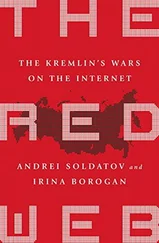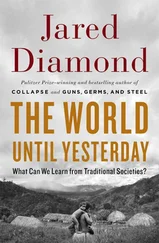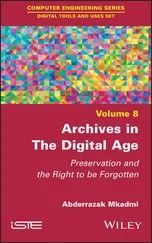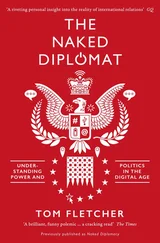Jared Cohen - The New Digital Age
Здесь есть возможность читать онлайн «Jared Cohen - The New Digital Age» весь текст электронной книги совершенно бесплатно (целиком полную версию без сокращений). В некоторых случаях можно слушать аудио, скачать через торрент в формате fb2 и присутствует краткое содержание. Жанр: Старинная литература, на английском языке. Описание произведения, (предисловие) а так же отзывы посетителей доступны на портале библиотеки ЛибКат.
- Название:The New Digital Age
- Автор:
- Жанр:
- Год:неизвестен
- ISBN:нет данных
- Рейтинг книги:5 / 5. Голосов: 1
-
Избранное:Добавить в избранное
- Отзывы:
-
Ваша оценка:
- 100
- 1
- 2
- 3
- 4
- 5
The New Digital Age: краткое содержание, описание и аннотация
Предлагаем к чтению аннотацию, описание, краткое содержание или предисловие (зависит от того, что написал сам автор книги «The New Digital Age»). Если вы не нашли необходимую информацию о книге — напишите в комментариях, мы постараемся отыскать её.
The New Digital Age — читать онлайн бесплатно полную книгу (весь текст) целиком
Ниже представлен текст книги, разбитый по страницам. Система сохранения места последней прочитанной страницы, позволяет с удобством читать онлайн бесплатно книгу «The New Digital Age», без необходимости каждый раз заново искать на чём Вы остановились. Поставьте закладку, и сможете в любой момент перейти на страницу, на которой закончили чтение.
Интервал:
Закладка:
In the future, tools like biometric data matching, SIM-card tracking and easy-to-use content-generating platforms will facilitate a level of accountability never before seen. A witness to a crime will be able to use his phone to capture what he sees and identify the perpetrator and victim with facial-recognition software almost instantly, without having to be directly in harm’s way. Information about crimes or brutality in digital form will be automatically uploaded to the cloud (thus no data loss if the witness’s phone is confiscated) and perhaps sent to an international monitoring or judicial body. An international court could then investigate, and depending on what it found, begin a public virtual trial and broadcast the proceedings back into the country where the perpetrator was roaming free. The risk of public shame and criminal charges might not deter leaders, but it would be enough to make some foot soldiers think twice before engaging in more violent activities. Professionally verified evidence would be available at The Hague’s website before the trial, and witnesses would be able to testify virtually and in safety.
Of course, the wheels of justice turn slowly, particularly in the labyrinthine environment of international law. While a system of data responsiveness develops, the intermediate gains will be the storage of verifiable evidence, and better law enforcement will result. An open-source app, created by the International Criminal Court or some other body, could feature the world’s most wanted criminals broken down by country. Just as the Chinese human-flesh search engines can pinpoint an individual’s location and contact details, the same capability can be turned toward hunting down criminals. (Remember: People will have powerful phones in even the most remote places.) Using the same platform, concerned citizens around the world could contribute financially toward a reward as an incentive for making an arrest. Then, instead of facing mob justice, the criminal would be taken into custody by police and put on trial.
The collective power of the online world will serve as a tremendous deterrent to potential perpetrators of brutality, corrupt practices and even crimes against humanity. To be sure, there will always be truly malevolent types for whom deterrence will not work, but for merely dishonorable individuals, the potential costs of bad behavior in a digital age will become only greater. Beyond the heightened risks of accountability and the increased liklihood of a crime being documented and preserved in perpetuity, whistle-blowers will use technology to reach the widest possible audience. Defectors will have a far greater incentive to avoid accusations of complicity in these documented crimes as well. Perhaps a digital witness-protection program will be built to provide informants with new virtual identities (like the ones sold on the black market mentioned earlier) to offer further incentives for their participation.
Permanent digital evidence will also help shape transitional justice after a conflict has ended. Truth-and-reconciliation committees in the future will feature a trove of digital records, satellite surveillance, amateur videos and photos, autopsy reports and testimonials. (We’ll explore this topic shortly.) Again, the fear of being held accountable will be a sufficient deterrent for some would-be aggressors; at the very least they might dial back the level of violence.
Beyond documenting atrocities, cloud storage will make data permanence relevant and important to people in conflict. Personal data not in the physical world will be safer, as it will be unreachable. Sometimes the outbreak of violence catches everyone by surprise. But in instances where the security situation is visibly declining, individuals will anticipate and prepare for the possibility of fleeing or being displaced. Individuals will also be able to sustain their claims to their homes, property and businesses even in exile or as refugees by capturing visual evidence and using tools like Google Maps and GPS to mark boundaries. They’ll be able to move their land titles and deeds to the cloud. Where there are disputes, the digital platforms will assist in arbitration. Civilians caught up in conflict and forced to flee could take pictures of all of their possessions and re-create a model of their home in virtual space. If they return, they’ll know exactly what is missing and may well be able to use a social-networking platform to locate the stolen items (after they’ve digitally verified that they own them).
Automated Warfare
When conflict escalates into armed combat, future participants will find the landscape of war to be nothing like it has been in the past. The opening of a virtual front to warfare will not change the fact that the most sophisticated automated weapons and soldiers must still operate in the physical world, never eliminating the essential role that human guidance and judgment play. But militaries that do not take into account this dual-world phenomenon (and their responsibilities in both) will find that, while new technology makes them far more efficient killing machines, they are hated and reviled as a result, making the problem of winning hearts and minds that much more difficult.
The modern automation of warfare, through developments in robotics, artificial intelligence and unmanned aerial vehicles (UAVs), constitutes the most significant shift in human combat since the invention of the gun. It is, as the military scholar Peter Singer notes in his masterly account of this trend, Wired for War: The Robotics Revolution and Conflict in the 21 st Century, what scientists would call a “singularity”—a “state in which things become so radically different that the old rules break down and we know virtually nothing.” Much as with other paradigm shifts in history (germ theory, the invention of the printing press, Einstein’s theory of relativity), it is almost impossible to predict with any great accuracy how the eventual change to fully automated warfare will alter the course of human society. All we can do is consider the clues we see today, convey the thinking of people on the front lines, and make some educated guesses.
Integrating information technology into the mechanics of warfare is not a new trend: DARPA, the Pentagon’s research-and-development arm, was created in 1958 as a response to the launch of Sputnik. 4The government’s determination to avoid being caught off guard again was such that DARPA’s mission is, quite literally, “to maintain the technological superiority of the U.S. military and prevent technological surprise from harming our national security.” Subsequently, the United States has led the world in sophisticated military technology, in everything from smart bombs to unmanned drones and bomb-defusing explosive-ordnance-disposal (EOD) robots. But, as we’ll discuss below, the United States may not hold that exclusive advantage for very long.
It’s easy to understand why governments and militaries like robots and other unmanned systems for combat: They never tire, they never feel fear or emotion, they have superhuman capabilities and they always follow orders. As Singer points out, robots are uniquely suited to the roles that the military refers to as the three Ds (jobs that are dull, dirty or dangerous). The tactical advantages conferred by robots are constrained only by the limits of robotics manufacturers. They can build robots that withstand bullets, have perfect aim, recognize and disarm targets, and carry impossible loads in severe conditions of heat, cold or disorientation. Military robots have better endurance and faster reaction time than any soldier, and politicians will much more readily send them into battle than human troops. Most people agree that the introduction of robots into combat operations, whether on the ground, at sea or in the air, will ultimately produce fewer combat deaths, fewer civilian casualties and less collateral damage.
Читать дальшеИнтервал:
Закладка:
Похожие книги на «The New Digital Age»
Представляем Вашему вниманию похожие книги на «The New Digital Age» списком для выбора. Мы отобрали схожую по названию и смыслу литературу в надежде предоставить читателям больше вариантов отыскать новые, интересные, ещё непрочитанные произведения.
Обсуждение, отзывы о книге «The New Digital Age» и просто собственные мнения читателей. Оставьте ваши комментарии, напишите, что Вы думаете о произведении, его смысле или главных героях. Укажите что конкретно понравилось, а что нет, и почему Вы так считаете.












